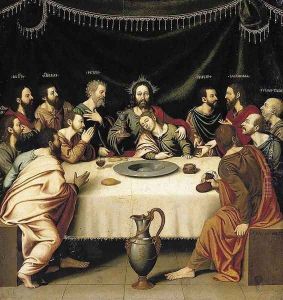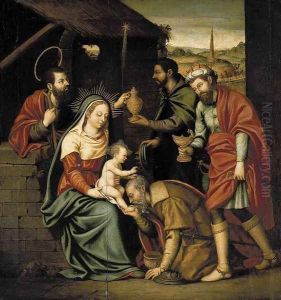Fray Nicolas BORRAS Paintings
Fray Nicolás Borrás was a Spanish painter known for his significant contribution to the Valencian school of painting during the late Renaissance and early Baroque periods. Born in 1530 in Cocentaina, now in the province of Alicante, Spain, he was a member of the Franciscan Order. His religious vocation deeply influenced his work, as he primarily focused on religious subjects, painting altarpieces and frescoes for churches and monasteries throughout the Valencia region.
Borrás received his artistic training in Valencia, which was a significant cultural center during the 16th century. Although not much is documented about his early training, it is believed that he was influenced by the works of Paolo da San Leocadio and other painters of the Italian Renaissance who had made their way to Spain. Borrás’s style is characterized by a strong use of chiaroscuro, the dramatic contrast between light and dark, and a focus on realism and emotional expression in his figures.
Throughout his career, Fray Nicolás Borrás produced a considerable number of works, many of which have been preserved and can be found in various churches and museums. One of his most notable works is the main altarpiece of the Monastery of Santa María de la Valldigna, which showcases his skill in composition and his ability to convey religious narratives with intensity and devotion.
Despite his success as an artist, Borrás led a humble life consistent with his Franciscan vows. His art was deeply intertwined with his faith, and he is often remembered for his devout lifestyle as much as his artistic talent. Borrás continued to work until his death in 1610, leaving behind a legacy that would influence subsequent generations of Spanish painters. His works are considered important examples of Spanish Renaissance and early Baroque art, reflecting the religious fervor and artistic trends of his time.

